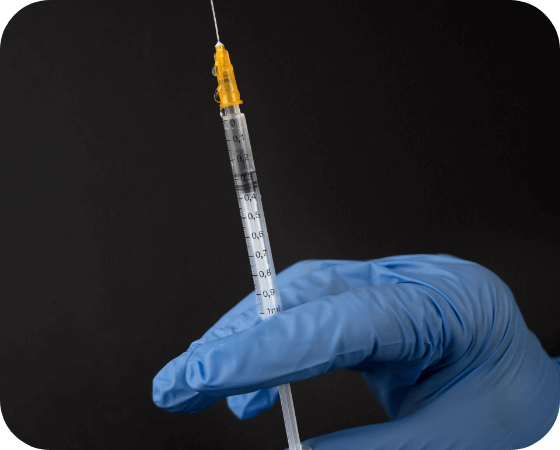People will only need annual COVID-19 booster shots after getting their third vaccine dose, according to a top Food and Drug Administration (FDA) official at the 2022 Innovation in Regulatory Science Summit in January 2022. Since then, however, mounting evidence over waning immunity plus the potential of a new wave of COVID-19 are feeding calls for people to get their fourth vaccine doses sooner rather than later. Does that mean Americans can expect to get a second booster shot in the coming months?
First, some Americans are already able to get a second booster shot. According to guidance from the Centers for Disease Control and Prevention (CDC), people ages 12 years and older who are moderately or severely immunocompromised should receive a total of four mRNA vaccine doses. This includes transplant patients and those undergoing chemotherapy for cancer.
Drug manufacturers are already asking for approval on second boosters for additional populations. In mid-March, Pfizer and Moderna submitted applications to the FDA for an emergency use authorization (EUA) for a second booster dose of their respective COVID-19 vaccines. While Pfizer is specifically seeking an EUA for adults over age 65, Moderna is requesting an EUA for anyone over 18 years of age.
The submission of both applications came just days after Pfizer CEO Albert Bourla said a fourth vaccine dose will probably be needed for everyone.
- One reason for this is mounting data that shows protection acquired from a third COVID-19 vaccine dose wanes over time. According to CDC data, a booster shot’s effectiveness in protecting against hospitalization dropped from 91% to 78% between August 2021 and January 2022 – a timeframe that includes both the Delta and Omicron variants.
- Another reason for a fourth shot is a need to protect Americans ahead of a new wave of COVID-19 cases. In recent weeks, a new Omicron subvariant known as BA.2 has driven an increase in cases across Europe, which many experts say could foreshadow an increase in cases in the US within the coming weeks. Although BA.2 is roughly 30% more transmissible than the original Omicron strain, it does not appear to be more severe or lead to more hospitalizations. While overall COVID-19 case numbers are still trending downward in the US, 10 states have reported an increase in case numbers over the last 14 days.
Due to these concerns over waning immunity and growing case numbers, nearly a dozen countries including Australia, Belgium, Denmark, Israel, Poland, Sweden, and the United Kingdom have already begun offering fourth doses, albeit eligibility is limited to seniors and medically vulnerable people in most cases. Additionally, reports suggest the FDA could authorize second boosters for all adults over age 50 as soon as March 29. However, that doesn’t necessarily mean the government will follow suit in recommending a fourth mRNA vaccine dose to every individual age 12 and up who’s already cleared to get a third dose anytime soon, as a couple issues stand in the way. These include:
- Regulatory approval. The FDA’s vaccine advisory committee will meet on April 6 to discuss the need for additional COVID-19 booster shots. However, the advisory panel will NOT be reviewing any EUA applications from Pfizer or Moderna or taking a vote on recommendations – instead, the committee will discuss the timing and populations for additional doses in the coming months. The April 6 agenda is a sign of the federal government’s cautious approach to boosters, which means it might take some time for federal regulators to sign off on additional doses, especially for the broader population. In September 2021, for instance, a CDC advisory panel declined to recommend third doses for people who work in “high-risk” settings like health care practitioners and teachers – a decision which was ultimately overruled by CDC Director Rochelle Walensky.
- Data. Even though a number of countries have already cleared fourth shots for certain populations, the jury’s still out on whether a second booster will make a difference for non-elderly adults who are not considered medically vulnerable. Preliminary results from a study involving 154 health care workers in Israel found that a fourth mRNA dose is only “partially effective” in protecting against the Omicron variant. Without any strong evidence of the effectiveness of a fourth shot, US regulators are likely to continue to take a cautious approach on recommending additional boosters for the broader population.
- Funding. Lawmakers dropped $15 billion in additional COVID-19 funding from the Fiscal Year (FY) 2022 omnibus appropriations bill, and so far, congressional leaders are locked in a stalemate on passing separate legislation on additional COVID-19 support. Without additional funding, Biden administration officials have warned that they won’t have enough money to purchase a potential fourth vaccine dose for even 70% of all Americans. And barring additional funding, the federal government will no longer be able to cover the cost of vaccinations for uninsured people starting on April 5, which means uninsured immunocompromised Americans may not be able to afford a booster if they need one.
Ultimately, the trajectory of the COVID-19 pandemic may ultimately inform whether additional boosters are necessary for Americans, and in turn, whether Congress decides to allocate enough money to pay for additional vaccine doses. While White House Chief Medical Advisor Anthony Fauci has acknowledged that the BA.2 subvariant is likely to cause cases to rise in the US, he doesn’t anticipate new cases will culminate in a major surge that results in high levels of hospitalizations.
Indeed, a good portion of the US population has acquired some degree of immunity through infection, vaccination, or both over the last two years of the pandemic, which could protect Americas from the worst consequences if case numbers continue to rise over the next few weeks. However, if hospitalizations suddenly spike across multiple populations, it may be too late for the federal government to act swiftly on additional boosters.

